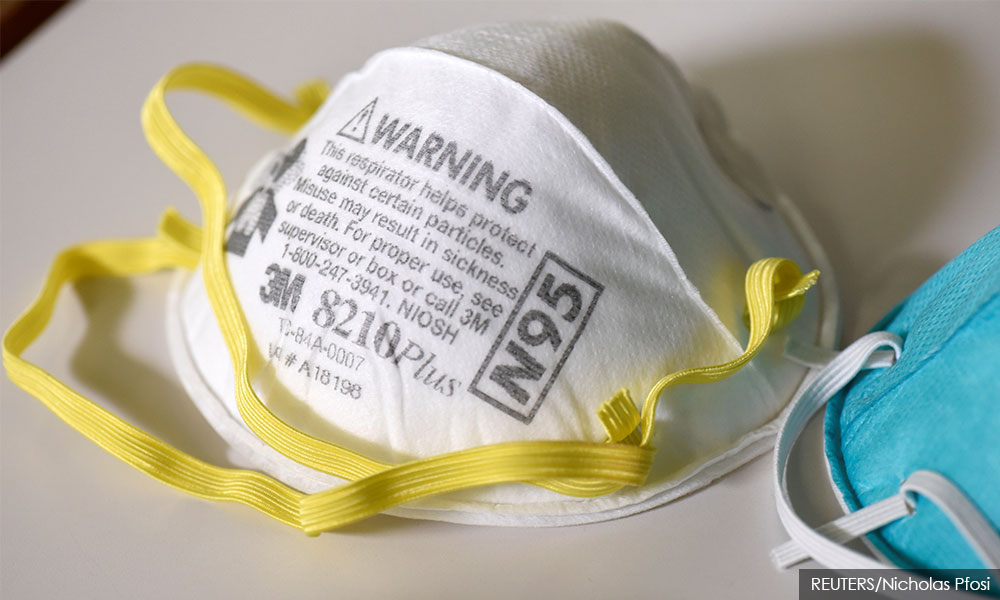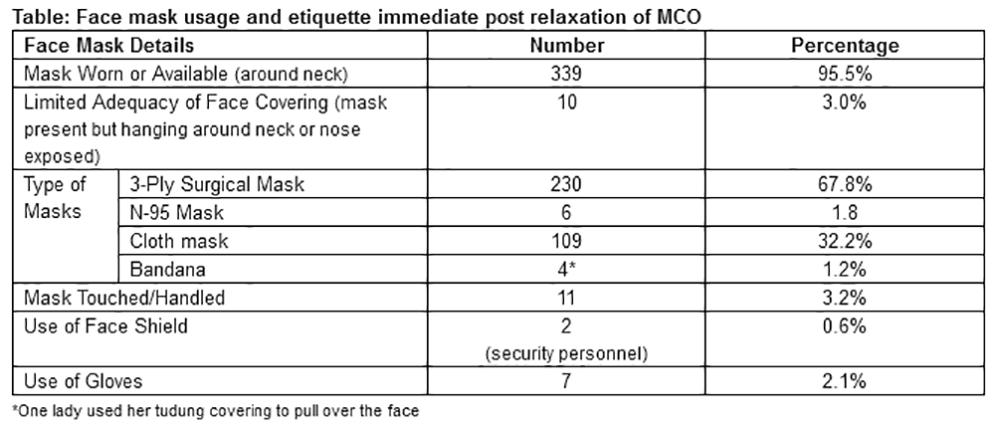COMMENT | The movement control order (MCO) was relaxed on May 4 to allow some sectors of society to return to work and business.
We recognise that not all Malaysians practice safe prevention measures. Mask usage is a useful adjunct protective measure to safe physical distancing and hand washing.
I searched for images and videos of the public posted on May 4th on mainstream and social media. These images and videos were analysed as to the use of masks, type of masks, adequacy of face-covering (position of mask), whether masks were being touched and the use of other face devices.
Individuals who could not be visualised well were excluded. Care was taken to avoid any duplicate images or videos.
I was able to identify 448 individuals seen clearly from 36 images and videos. They were imaged at food outlets, in or at the entry to malls, in or at mass transport locations, at roadside queues, among others. Of these, only 355 could be analysed as the rest had their backs facing the camera. Most were taken in the Klang Valley. The table shows a summary of the data.
Although this data is a small "snap-shot" of the public, it offers some idea of the behaviour on the first day of post-MCO relaxation. The data, however, offers no idea of the behaviour inside offices and throughout the day.
While it is encouraging that the vast majority (95 percent) had masks, however, three percent did not use them correctly and another three percent were touching the outer surface of the mask. The majority (68 percent) used 3-ply surgical mask which may be of concern. While 3-ply surgical masks are more protective than cloth masks, they do not last as long (1-2 hours) and once damp need to be changed.

Excessive use by the general public of surgical mask will deplete an important resource for healthcare professionals (HCPs). It is possible that some were wearing surgical masks for travel and might then change to cloth masks or no masks in the office. A small percentage (1.8 percent) were using N-95 masks and this should be discouraged as there is a shortage for HCPs.
Three percent were seen hanging the mask around the neck or leaving the nose exposed, which defeats the purpose of wearing a mask. Some would do this when eating but fail to recognise the risk of pulling down the mask and putting it up again with resultant hand contamination.
Hand disinfection before wearing and when taking off masks is crucial. Of even more concern is the three percent were spotted touching the mask with hands or handphones – a good way to get infected with the coronavirus.
Handphones should be used with the speaker function and not brought to the face when wearing a mask. Two percent of public/staff were identified wearing gloves. The public and staff should be discouraged from wearing gloves routinely, as this gives a false sense of security.
With gloves on they may touch many surfaces, becoming a risk to others. Gloves should only be used short term, for cleaning activities.
Two security persons were noticed using a face shield. Face shields are useful but not always easy to wear in a busy work environment. Cashiers, security guards and front-line staff should consider wearing safety glasses (with side and top shields) that can be easily cleaned or washed.
In three images, the public was seen entering their details into a book. Although the authorities have asked premises to note down the person visiting the location, this practice of using a physical book is dangerous as it aids Covid-19 transmission.
There has been much debate about the value of masks in this pandemic. A recent evidence-based analysis of the studies, "Review Face Masks Against Covid-19: An Evidence Review", concluded that “The preponderance of evidence indicates that mask-wearing reduces the transmissibility per contact by reducing transmission of infected droplets in both laboratory and clinical contexts. Public mask-wearing is most effective at stopping the spread of the virus when compliance is high.
"Thus, we recommend the adoption of public cloth mask-wearing, as an effective form of source control, in conjunction with existing hygiene, distancing, and contact tracing strategies. We recommend that public officials and governments strongly encourage the use of widespread face masks in public, including the use of appropriate regulation.”

In the face of this pandemic, I would encourage the public to use cloth masks routinely when outside the home. The public must remember that wearing masks must not lull us into a false sense of security. Safe physical distancing is the single most important measure and must never be neglected.
DR AMAR-SINGH HSS is a senior consultant paediatrician.
The views expressed here are those of the author/contributor and do not necessarily represent the views of Malaysiakini.
Keep up with the latest information on the outbreak in the country with Malaysiakini's free Covid-19 tracker.
Malaysiakini is providing free access to the most important updates on the coronavirus pandemic. You can find them here.
Help keep independent media alive - subscribe to Malaysiakini.


